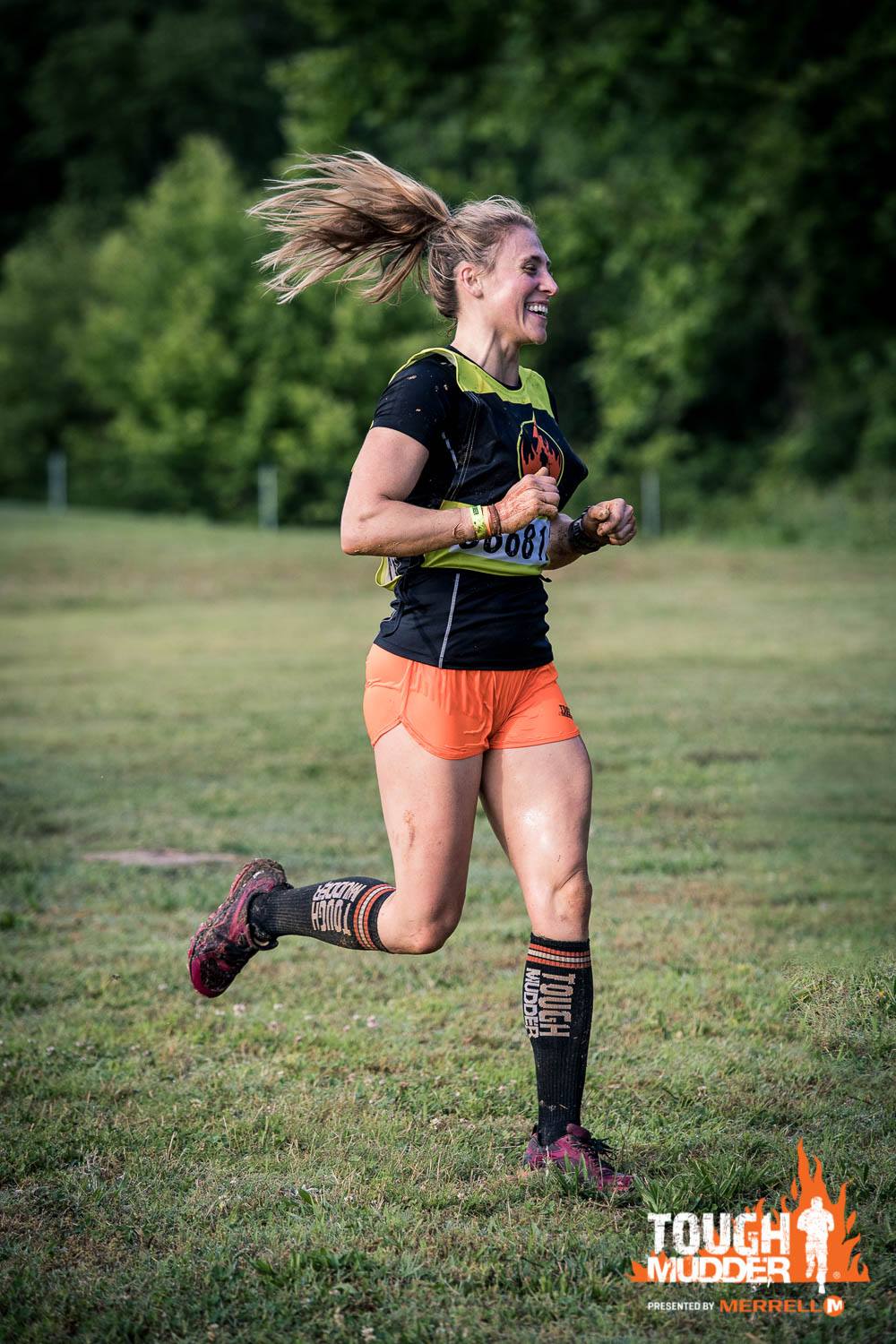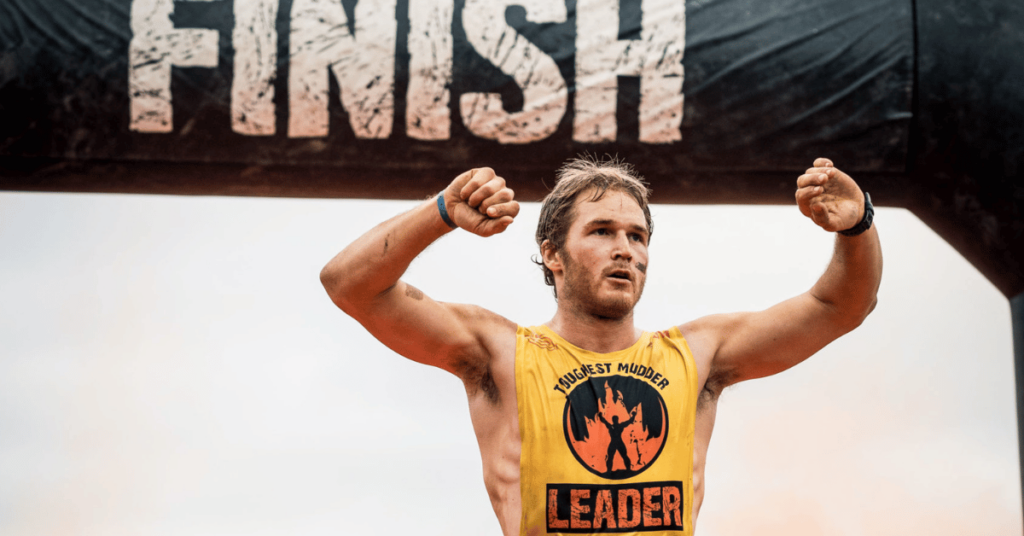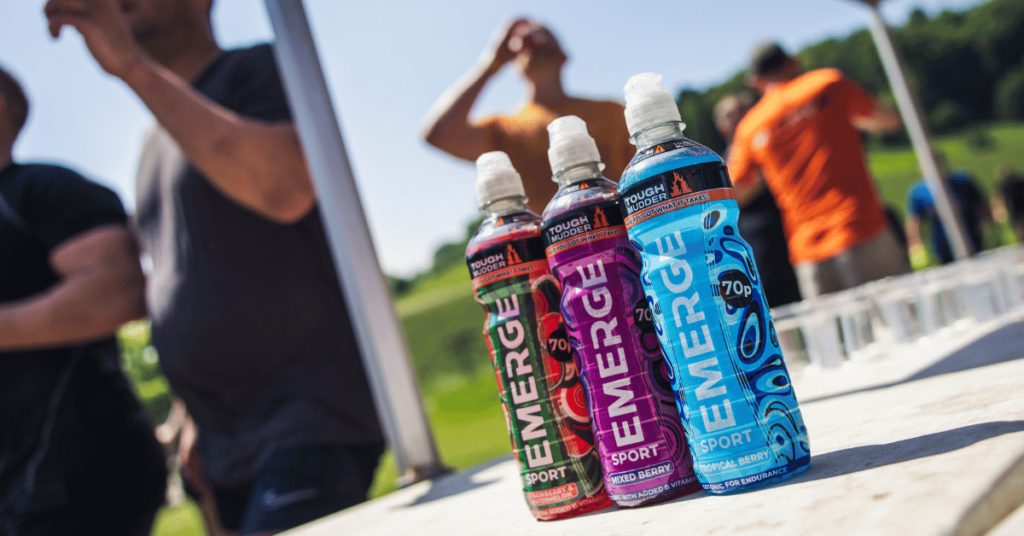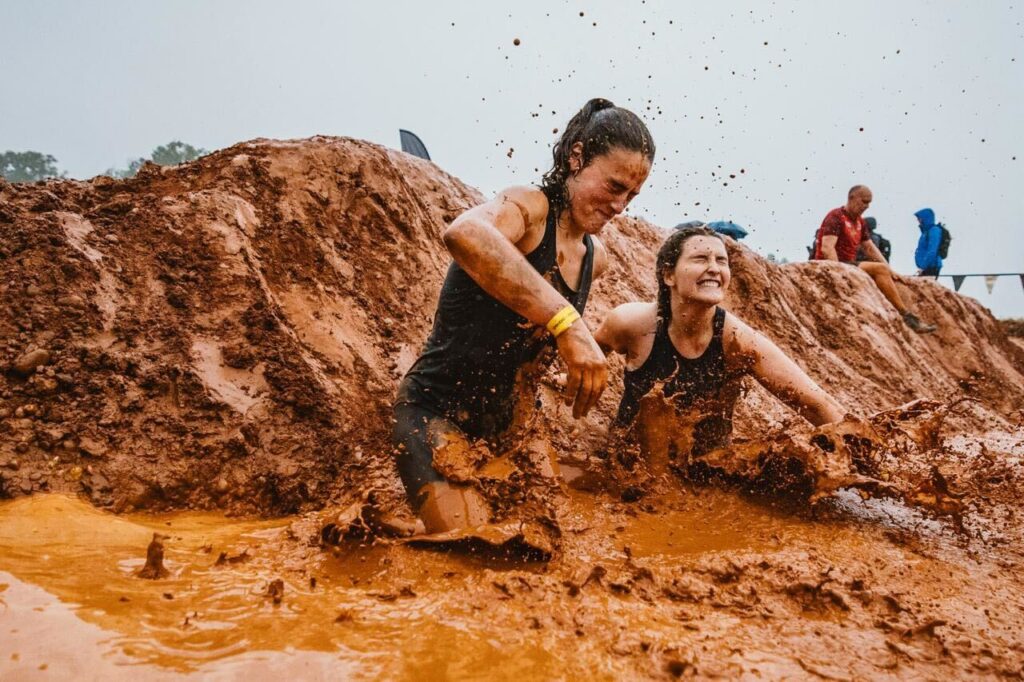Before you start packing for any Tough Mudder event, check the weather. Don’t just check the overall weather report, look at the specific time of day when you expect to be out on course, and the humidity and wind, which will affect the course conditions. For Toughest Mudder events, remember that temperatures change drastically throughout the day and it tends to be coldest right before the sunrise.
After 12 years of endurance racing, I still find it helpful to make a checklist for longer events. Check mine out below.
Must-Have Gear

Sneakers
Quantity: 2
You can’t go wrong with the Merrell All Out Crush. They have a great tread, which is especially useful when you get to obstacles like Mud Mile. Plus, they drain really well, so your won’t feel like your feet are weighing you down. (Tip: Head to the Merrell tent in the festival area to try them on before your start wave.) I wear half size larger in the AOC.
I bring a backup pair of sneakers. Rarely will I change them, but I like to have the option.
Socks
Quantity: 2-3
You have many options for socks, but I recommend choosing a pair with wicking capabilities (i.e. not cotton). Any length will suffice (ankle, above the ankle or knee). I run in CEP compression socks that cover my ankle. I prefer the extra protection I get if I use a heel-hook to get over Berlin Walls or Skidmarked. You can also choose socks with various cushioning. If you aren’t sure what you prefer, test out some different style before event day. An ill-fitting sock can cause you to lose toenails.
I will pack multiple socks, because a fresh pair mid-race can be a big pick-me-up. Additionally, if the terrain is very loose, you will sometimes get debris build-up. Most times, it’s easier to change your socks than it is to take your current pair off, shake them out, and then put them back on.
Shorts/Leggings
Quantity: 2-3
I prefer to run in compression leggings, unless it’s very hot out. I like the extra protection when I’m crawling through obstacles. But I’ve also run in running shorts and spandex shorts.
Odds are you aren’t going to change, but if you start the event thinking that you’ll be cold or that you’ll get too hot, you may want the option to change. Plus, it’s nice to have a backup in case your bottoms catch and tear on something.
Top
Quantity: 2-3
This is a weather dependent decision. I prefer to run in a sports bra or tank top when it’s nice out.
I will pack a tank top, short sleeve and a long sleeve shirt- specifically Merrell compression tops. If the weather is supposed to be cooler, I’ll pack one short sleeve and two long sleeve.
Costumes
If you want to run in a costume, please do. Take into consideration possible “hot spots” – places where your costume may chafe – and make sure to put some anti-chaffing cream there on that spot beforehand.
Nice-To-Have Gear

Headlamp + Backup Headlamp
Make sure it’s waterproof or use silicone sealant to waterproof it. Start the event with fresh batteries.
String
Use this to attach the strap of your headlamp to your bib. If your headlamp falls off in the water, you won’t lose it.
Windbreaker/Rain Jacket
I love the Merrell Fallon Rain Shell because it keeps the wind out, the heat in, and doesn’t hinder my range of motion.
Wetsuit
I run in the Orca SwinRun CORE because it is engineered with the idea that you will be running in it. It is a lighter suit, and as someone who doesn’t handle the cold well, I have to say that it gets the job done. If temperatures really dip, I’ll layer with my Merrell Fallon Rain Shell to keep warm.
Swimcap
This is an easy and inexpensive way to add warmth. Personally, I prefer silicone over latex, but if you want something heavier, there are neoprene options out there.
Neoprene Top or Vest
Another option for warmth is getting a neoprene top, vest or something like FrogSkins- which are a fleece-lined neoprene top. They won’t be as warm as a wetsuit because they flush more water. If you go this route, try training in it beforehand to check flexibility; you don’t want anything restricting your shoulder movement.
Neoprene Gloves
When the temperatures get into the 40s (or 5-10C for all of you international Mudders), I will wear neoprene gloves. BleggMits, created by WTM champ, Deanna Blegg, are a great option. They have an overlapped split of fabric down the front which allows you to pull your hand out when doing an obstacle and then retract it inside again to re-heat your hand while running.
Anti-Chaffing Cream
Anything like Bodyglide, Trail Toes and Gurney Goo will keep hot-spots in check. I use Body Glide on my feet before the event to keep blisters at bay.
Toothbrush
Brushing your teeth is a great pick-me-up. Seriously.
Strobe Light + Backup Strobe Light
Food
Try out your nutrition beforehand. I like to make sure to cover different flavor profiles – sweet, salty and sour/tangy.
2.5 Gallon Storage Bags
I pack 2.5 gallon storage bags for Toughest Mudder so that it’s easy for my pit crew to locate items. One bag is for food and another is for extra gear.
Totally-Optional Gear

Gaiters
Gaiters cover the opening of your shoe to keep extra debris out. I sometimes run in gaiters when I know there will be a lot of loose rock along the course. Depending on the location of your Mudder event, these may be useful.
Gloves
Gloves are all about personal preference. Unless it’s cold, I don’t wear gloves.
Looking to watch World’s Toughest Mudder this November? Here’s how to catch the action of #WTM2018 without leaving the comfort of your own home.




